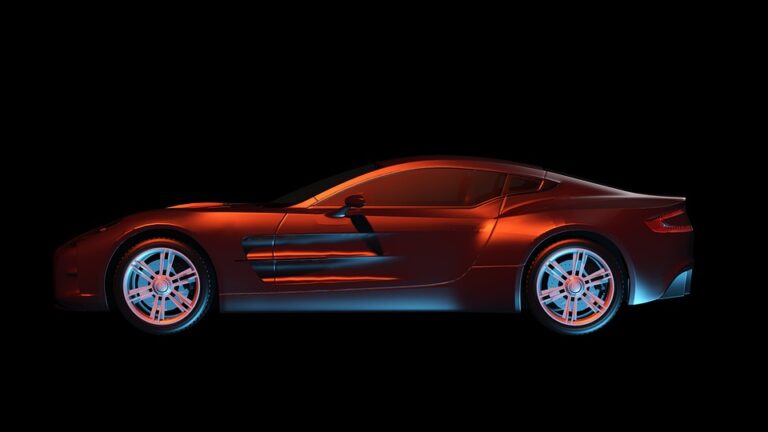Sustainable Design in the Automotive Industry: Innovations for a Greener Future
The automotive industry is facing a paradigm shift as it embraces sustainable design practices to combat climate change and embrace eco-friendly manufacturing. As environmental concerns surge and consumers demand more sustainable options, automotive design is evolving rapidly. In this article, we explore the innovative approaches and technologies that are reshaping the automotive landscape for a greener future.
The Need for Sustainable Automotive Design
With global transportation accounting for approximately 24% of greenhouse gas emissions, the automotive industry must address its environmental impact. The European Commission’s Green Deal sets a target for Europe to become the first climate-neutral continent by 2050, which has prompted manufacturers to rethink automotive design significantly.
Key Innovations in Sustainable Automotive Design
- Electric Vehicles (EVs)
Electric vehicles have emerged as frontrunners in sustainable automotive design. With global EV sales increasing by 108% from 2020 to 2021, automakers are investing heavily in electrification. Innovations in battery technology, such as solid-state batteries, promise to improve range and reduce charging times, making EVs more appealing to consumers.
- Recyclable Materials
Sustainable automotive design also emphasizes the use of recyclable materials. Automakers are incorporating materials like bioplastics, derived from renewable sources, and recycled metals into vehicle production. For example, BMW’s i3 model features a cabin made from renewable raw materials and recycled plastics, demonstrating how environmentally conscious design can cut waste and reduce environmental footprints.
- Lightweight Structures
Another innovation in sustainable automotive design is the focus on lightweight structures. Using advanced materials like carbon fiber and aluminum reduces a vehicle’s overall weight, leading to improved fuel efficiency. Tesla, for instance, utilizes an innovative aluminum structure to reduce overall weight and increase the range of its vehicles, showcasing how automotive design can result in lower energy consumption.
Embracing Circular Economy Principles
The shift toward sustainable automotive design also includes embracing the concept of a circular economy. This involves designing vehicles not just for immediate use but for longevity and recyclability. Mercedes-Benz’s Citaro buses are a case in point; they are designed with maximum recyclability in mind—95% of the vehicle can be repurposed at the end of its life cycle, thus contributing to a more sustainable automotive industry.
The Role of Technology in Sustainable Design
Advancements in technology have played a crucial role in the evolution of sustainable automotive design:
- 3D Printing: Allows manufacturers to create parts with minimal waste.
- Artificial Intelligence (AI): Enhances efficiency in the design process, enabling engineers to simulate and test designs before manufacturing, significantly reducing resource consumption.
- Telematics: Provides real-time data on vehicle performance, helping manufacturers optimize designs for fuel efficiency and emissions reduction.
The Future of Sustainable Automotive Design
The future of automotive design lies in collaboration between automakers, tech companies, and regulatory bodies. Innovations will continue to emerge as companies prioritize sustainable practices in their design processes. As customer interest in green initiatives increases, the demand for transparency in the automotive industry will also grow.
Examples of Leading Companies
- Toyota: Renowned for its commitment to sustainability, Toyota’s Mirai hydrogen fuel cell vehicle represents a significant step towards zero emissions.
- Ford: The company has pledged to invest $22 billion through 2025 in electrifying its product lineup, with a focus on sustainability and reducing waste.
Conclusion
Sustainable design in the automotive industry is not just about adhering to regulations; it is a pathway toward innovation and responsibility. By leveraging electric vehicles, recyclable materials, lightweight structures, and technology, the industry is transforming for a greener future. As consumers become increasingly eco-conscious, automotive manufacturers must continue to adapt and innovate, ensuring that sustainability is at the forefront of automotive design.
For more insights on the evolving automotive landscape, check out these relevant articles from buzzo.live:
- The Rise of Electric Vehicles: A New Era in Automotive Design
- How Technology is Shaping the Future of Automotive Manufacturing
For further reading on the sustainability challenges within the automotive sector, visit The World Economic Forum.
Image Suggestions
- Image Alt Text: Sustainable automotive design innovations.
- Image Alt Text: Electric vehicle manufacturing process.
By prioritizing sustainable design, the automotive industry is paving the way for a more eco-conscious future, demonstrating that innovation and environmental responsibility can go hand in hand.


